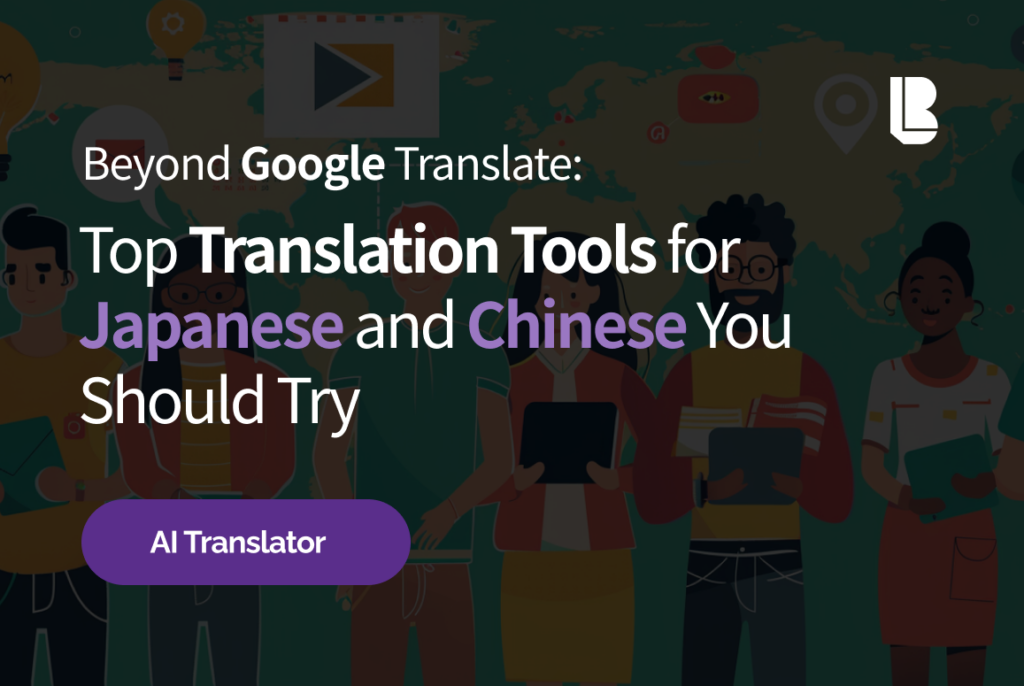Today, we want to discuss the growing importance of translation websites in our daily lives. Our world has become more globalized than ever before. Whether it’s for international travel, collaborating with foreign companies at work, or even shopping online, we frequently encounter situations where we need to cross language barriers. This is where translation websites come in handy.
These sites are accessible 24/7, providing instant results that can save a lot of time. Moreover, most translation websites are free, making them a cost-effective solution. With the advancements in AI technology, the quality of translations has improved dramatically. The difference in translation quality between now and a decade ago is truly remarkable. However, not all translation websites offer the same level of accuracy, so it’s important to choose the right one.
In this post, we’ll take a closer look at some of the best Japanese and Chinese translation websites available today. Additionally, we’ll explore AI translators that are ideal for more specialized translation needs.
✍🏻 Recommended Japanese Translation Websites
Let’s start by diving into the most recommended Japanese translation websites.

Google Translate is probably the most familiar tool for many of you. It’s free, easy to use, and supports a wide range of languages. One of its key advantages is that it offers not just text translation but also image and voice translation, making it versatile for travel and daily use.
Papago, developed by Naver, excels in translating between Korean and Japanese. It accurately reflects the linguistic nuances between these two languages, providing more natural translations. The image translation feature is particularly helpful when traveling in Japan, as it can translate signs and menus.
DeepL is an AI-based translation service that has recently gained a lot of attention. It uses AI to understand context and provide more accurate translations, especially for professional documents and long sentences. DeepL supports 33 languages and can translate various document formats like PDF, Word, and PowerPoint, making it useful for work or academic purposes.
✍🏻 Recommended Chinese Translation Websites
Now, let’s explore the best Chinese translation websites.

Baidu, China’s leading search engine, is similar to Naver in South Korea. Baidu Translate’s greatest strength is its ability to translate using phrases commonly used by native speakers. Additionally, it highlights the corresponding part of the original text when you click on a translated sentence, which is particularly helpful for longer texts. However, note that the Baidu site is in Chinese, which may pose a challenge for beginners, and the image translation feature requires user registration.
The World Language Translation Dictionary website offers translation in 110 languages, including various Chinese dialects like Standard Chinese, Cantonese, Taiwanese, and even Classical Chinese. It’s simple to use, making it accessible for first-time users, and it also supports HTML document translation, which is useful for web page translations. The main downside is the outdated site design and the abundance of ads, which can be distracting.
Microsoft Translator supports various Chinese dialects, including Simplified and Traditional Chinese, as well as Written Chinese and Cantonese. One of its main advantages is its integration with Microsoft Office, allowing you to translate entire Word documents at once. However, it may sometimes struggle with complex sentence structures, so caution is advised.
😎 Legal Translation Requires More Than Everyday Language Translation
For everyday conversations or simple texts, these free services might be sufficient. However, when it comes to translating specialized content like contracts or important business documents, it’s crucial to be cautious. In such cases, using a professional translation service is safer, especially for legal documents or contracts, where a single mistranslation can lead to significant issues.
If you need to translate business or legal documents, we recommend using BeringAI. Not only can it translate into Korean and English, but it also supports languages like Chinese, Japanese, Spanish, and Indonesian. BeringAI uses an AI model specialized in legal translations, offering far more accurate results than general translation tools.
For example, even a single word like “contract” can be translated into various terms such as “contract,” “agreement,” or “covenant,” depending on the context. BeringAI accurately grasps these nuances and translates them accordingly.
Another useful feature is that BeringAI preserves the document’s original formatting. Whether you upload a Word or PDF file, the format remains intact after translation, saving you the trouble of re-editing. This not only saves time but also reduces the risk of errors.

We’ve covered various translation websites today. To use translation websites effectively, it’s important to choose the right one for your situation. For everyday conversations or simple sentences, general translation tools like Google Translate or Papago will suffice. However, for specialized or lengthy texts, AI-based translators like DeepL or BeringAI may provide more accurate results.
Bering Lab’s legal translation service offers a level of precision and legal expertise that general translation websites simply cannot match. Plus, the ability to maintain document formatting is an invaluable feature that saves you time and effort in post-translation adjustments. For those needing business or legal translations in English, Japanese, or Chinese, we highly recommend using BeringAI. There’s even a free trial, so be sure to give it a try.
We hope today’s content has been helpful for your translation needs, and we look forward to sharing more useful translation insights with you in the future.


